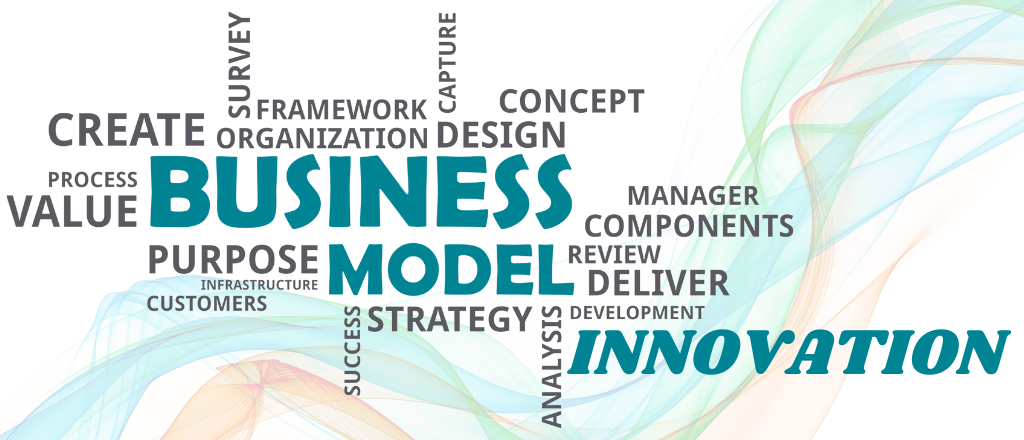What Is the Freemium Model and Why Does It Work?
Freemium—a blend of “free” and “premium”—is a strategy where companies offer a basic version of their product at no cost to users, reserving advanced features or capabilities for those willing to pay.
This approach is especially powerful in competitive industries like software and digital services, where high-quality products, strong gross margins, and expensive customer acquisition are the norm.
The benefits of freemium include:
- Lowered Barriers to Entry: Because users can try out the base product risk-free, conversion rates often increase as people experience real value firsthand.
- Efficient Customer Acquisition: Freemium can significantly reduce marketing spend since happy users often become organic advocates, spreading the word and helping fuel adoption.
- Rapid Scaling: By attracting a wide pool of free users, companies have a larger potential customer base to convert into paid subscribers over time.
Some of the most recognized examples of freemium in action include Slack and Zoom in the business world, and Spotify and Apple iCloud among consumers. However, it’s important to note that for freemium to be sustainable, the free offering must genuinely engage users—otherwise, too few may see enough value to upgrade.
A Guide to Business Model Innovation
Business model innovation is a competitive strategy offering organizations a way to redefine their value proposition, operational structure, and revenue streams.
In this guide, we’ll explore what business model innovation entails, why it’s critical for success, and how innovation management leaders can leverage software tools and strategic services to guide transformational growth.
What is Business Model Innovation?
Business model innovation is the process of reinventing how a company delivers value to its customers and captures profits. Unlike product or process innovation, it focuses on altering the framework of business operations, including customer engagement, revenue generation, and cost management.
Why It Matters:
Adapts to disruptive technologies
Enhances market differentiation
Unlocks new revenue opportunities
Hybrid Business Models: A Dynamic Approach
Hybrid business models blend elements from multiple traditional business models to unlock greater value for both the organization and its customers. Rather than following a single path—like purely selling products, offering subscriptions, or relying entirely on advertising—hybrids stitch together several strategies in a way that is uniquely tailored to their specific market and goals.
For example, some companies pair a physical product sale with a recurring subscription, ensuring a stream of revenue beyond the initial purchase. Others may combine freemium offerings—where basic services are free but advanced features come at a cost—with advertising or pay-per-use options. This approach creates flexibility to appeal to different customer segments and adapt to evolving market demands.
Benefits of Hybrid Models:
- Unlock new revenue streams by serving diverse customer preferences
- Increase customer engagement by bundling products and services
- Spread risk across different income sources
- Tailor solutions for greater market differentiation
Hybrid models are used by both startups and established companies seeking to maximize value and respond nimbly to changes in consumer behavior or technology shifts. However, the success of a hybrid approach hinges on thoughtful integration—aligning the combined elements so they reinforce, rather than compete with, each other.
It’s essential to recognize that innovation in the business model alone isn’t a guarantee of long-term success. Leadership decisions, execution, and customer loyalty all play pivotal roles. A well-designed hybrid business model provides a sturdy foundation, but thriving in the market requires organizations to continually adapt, motivate customers, and deliver consistent value.
Advertising, Affiliate, and Sponsorship Revenue Models
- Advertising – How can you leverage your audience to attract advertisers?
Throughout history, businesses have earned revenue by allowing external companies to reach their audience through ads. Whether it’s display banners on a website, pre-roll video spots, or sponsored episodes on podcasts, organizations can monetize their platforms by selling access to their engaged viewers or readers. While competition for attention is fierce in the digital era, effective targeted advertising can still provide substantial income, especially for those with dedicated or niche audiences. - Affiliate Marketing – Can your content drive sales for other businesses?
Affiliate programs let organizations earn commissions by promoting relevant products or services. When an audience member makes a purchase through a unique referral link, the business receives a portion of the sale. This approach works particularly well for companies or creators with a trusted, loyal following—think of technology review blogs recommending gear, or travel influencers linking to hotel booking platforms. - Sponsorships – Are there brands interested in aligning with your content or events?
Sponsorship revenue comes from collaborating with brands that want their name associated with your platform, event, or community. This could mean sponsored content, branded webinars, or event sponsorships. By aligning with brands that share your values or audience interests, you unlock not just funding, but often additional promotional support.
These models can stand alone as primary revenue sources, or supplement existing income streams, depending on the size and focus of your business. Identifying the right mix depends on audience size, engagement level, and industry niche.
Key Elements of Business Model Innovation
Key Elements of Business Model Innovation
To succeed in business model innovation, organizations must address these core components:
- Value Proposition – How can you deliver unique value to your customers?
- Revenue Streams – Are there untapped revenue sources you can explore?
- Operational Efficiency – Can processes be restructured to reduce costs or increase speed?
- Customer Experience – How can technology enhance the customer journey?
Start With Customer Value
Every effective business model innovation begins with a deep understanding of customer value. Consider the following:
- What is the “job” your customer wants done?
- What obstacles stand in the way of achieving this job?
- What solutions are customers currently using, or why might they be putting the job off?
- How do customers determine if the job is accomplished successfully?
Answering these questions provides clarity and direction, ensuring that any innovation is grounded in genuine customer needs. By focusing on the real problems your customers face and understanding their journey, you lay the foundation for meaningful, sustainable innovation.
Why Small Business Model Adjustments Matter
Even the most innovative products can struggle without the right business model to back them up. Sometimes, it’s the seemingly minor adjustments—like changing how a product is sold, repackaging its value, or rethinking pricing—that tip the balance between obscurity and widespread adoption.
History is filled with examples: a clever product might languish on shelves until its creators tweak the way it reaches customers or generate recurring revenue. These pivots aren’t always dramatic but can be the difference maker. That’s why, even after launching a “brilliant” solution, successful teams stay agile—constantly gathering feedback, iterating rapidly, and fine-tuning their models before the market window closes.
In short, don’t be afraid to experiment. Rarely does the first iteration hit the mark; it’s the willingness to adapt the business model that often determines long-term commercial success.
Leveraging Your Unique Strengths
An essential step in crafting an innovative business model is tapping into your organization’s distinctive assets and capabilities. Start by identifying what sets you apart—be it proprietary technology, a highly skilled team, or access to specialized data.
For instance, if your company possesses extensive information on how and when your products are used, you could develop predictive maintenance offerings or even tailor insurance solutions. By building on core strengths, businesses are able to deliver solutions competitors can’t easily replicate, opening up new avenues for value creation and differentiation.
Aligning Your Business Model with Your Objectives
Equally important to the mechanics of a business model is understanding how your overarching goals shape its design. The objectives you set—whether that’s maximizing profit, pursuing aggressive growth, or delivering unparalleled service—determine which model will fit best.
For instance, if rapid growth is your aim, you may gravitate toward models that lower barriers to entry for customers, prioritizing adoption even if it means slimmer margins initially. Freemium or open source strategies often follow this path, focusing on widespread use over short-term profitability. While this may seem risky, it can fend off competitors and establish your foothold in the market.
On the other hand, if operational excellence or steady profitability is your primary target, you might favor models that optimize for efficient processes or diversified, stable revenue streams. Ultimately, defining your objectives early allows you to tailor your business model—adding, removing, or adjusting components—to give your strategy the best chance of success.
Aligning Your Business Model with Strategic Objectives
When selecting the right business model, your organization’s goals—whether driven by growth, profitability, or customer satisfaction—play a pivotal role in shaping your approach.
- Growth-Driven Models
If rapid expansion tops your priority list, you’ll likely gravitate towards models that prioritize widespread adoption, sometimes at the expense of short-term profitability. Strategies like Freemium or open-source deliver maximum value upfront, enticing a broad user base. While this might mean slimmer margins initially, it can build critical momentum, grow your market share, and erect barriers against competitors over time. - Profitability-Focused Models
Organizations seeking immediate financial returns may favor business models emphasizing premium services, unique offerings, or niche markets. Here, every process and product is fine-tuned for revenue generation and cost control. This often results in steadier, more predictable profit streams, even if it means slower overall growth. - Customer-Centric Approaches
If your main ambition is to delight customers and deliver standout experiences, your business model will center on meeting or exceeding client expectations at every touchpoint. This might involve tailored solutions, high-touch support, or innovative service delivery—whatever is necessary to ensure lasting loyalty and stellar satisfaction ratings.
Ultimately, the “best-fit” business model flows directly from your objectives; aligning model selection with your North Star ensures that operations, value delivery, and financial performance are all rowing in the same direction.
Uncovering Your Customer’s True Needs
Understanding what your customer truly wants is the foundation of any successful business model innovation. Here are some key questions to guide your exploration:
- What task or goal is your customer trying to accomplish?
- What hurdles are they encountering along the way?
- What workarounds or alternatives are they currently using, if any?
- How do they recognize when their goal has been achieved—or whether there’s still a gap?
Digging into these questions doesn’t just illuminate your customer’s pain points; it can also reveal hidden opportunities to deliver value where competitors have fallen short.
How the Direct-to-Consumer (D2C) Model Changes the Game
Traditionally, manufacturers—whether selling chocolate bars or industrial widgets—have depended on a multi-layered network of wholesalers and retailers to get their products into customers’ hands. This strategy offered worldwide reach and allowed companies to scale up, but it also tangled them in complex logistics and left them relying heavily on third parties for both sales and customer data.
Enter the Direct-to-Consumer (D2C) model. By leveraging e-commerce, manufacturers now bypass the intermediaries entirely, selling their goods straight to buyers via their own online platforms. Here’s how D2C stands apart:
- Increased Margins: With no distributors or retailers taking a cut, manufacturers keep a larger share of each sale.
- Greater Brand Control: Owning the customer relationship enables full command over messaging, packaging, and service—not unlike Nike running its own flagship stores.
- Deeper Customer Insights: Direct sales allow businesses to collect richer, real-time data about buying habits and preferences, fueling smarter product development.
- Streamlined Operations: Fewer parties involved means leaner processes and quicker pivots to market changes.
In short, D2C transforms the old playbook by cutting out the middlemen, giving businesses both agility and direct access to the hearts—and inboxes—of their customers.
Business Model Innovation
is Crucial in Today’s Market

Benefits of Business Model Innovation:
- Increases adaptability in uncertain markets
- Promotes sustainable growth and scalability
- Strengthens competitive positioning
- Makes businesses more robust against market cycles and unexpected “black swan” events—such as the recent COVID-19 crisis
By rethinking their business models, organizations can better weather disruptions and emerge stronger, equipped to navigate both predictable shifts and unforeseen challenges.
Benchmarking Beyond Boundaries
To truly innovate, it pays to look outside your own industry. Some of the most groundbreaking business model changes come from adapting winning strategies used in completely different sectors. For example, a manufacturer might borrow subscription models from the digital media world, or a retailer could implement “as-a-service” concepts pioneered by software companies.
By exploring how other industries create and capture value, organizations can break free of conventional thinking and discover fresh opportunities. Resources such as the Business Model Navigator highlight dozens of proven patterns from around the globe, making it easier to spot approaches worth adapting. This cross-pollination not only sparks creativity but also helps companies anticipate market shifts before they become industry standards.
Combining Business Model Patterns to Maximize Value
Forward-thinking organizations rarely limit themselves to a single business model. Instead, they often blend multiple patterns to craft a hybrid approach tailored to their unique value proposition and customer needs.
By combining elements such as freemium offerings, subscription services, and advertising-supported models, companies can unlock new dimensions of value:
- Layered Revenue Streams: For example, a company might offer a free tier supported by advertisements, while providing premium, ad-free experiences through paid subscriptions. This allows them to capture value from different customer segments—those who prefer to pay with attention and those who prefer to pay with direct purchases.
- Product-Service Integration: Physical products can be bundled with digital services. Consider how high-end fitness equipment can be paired with ongoing subscriptions for virtual classes and personalized workout plans. While the initial sale might not be highly profitable on its own, recurring service fees create long-term value and customer engagement.
- Customer Retention Mechanisms: Combining business models also encourages ongoing customer interaction. Subscriptions, for instance, incentivize businesses to continuously innovate and enhance their offerings, ensuring that customers remain engaged and see sustained value over time.
Ultimately, successful hybrid models are dynamic—they evolve as markets shift and as businesses learn from their customer data. While an innovative mix of models can provide a solid foundation, steady leadership and agile execution remain critical for sustainable growth and resilience in today’s fast-changing marketplace.
Creating Predictable Revenue with Subscriptions and Add-On Services
For product-based businesses aiming to build more reliable revenue streams, subscription models and add-on services present compelling solutions. Rather than relying solely on one-time purchases, organizations can introduce ongoing value through innovative offerings:
- Subscription Services – By bundling products with periodic delivery or premium features, companies can transform single sales into recurring revenue. Examples include subscription boxes, software-as-a-service (SaaS) platforms, and maintenance plans that keep customers engaged month after month.
- Value-Adding Services – Enhancing the core product experience with services such as training, technical support, customization, or upgrades creates further reasons for customers to remain connected. Consider how companies like Apple offer device protection plans or how automotive brands provide routine maintenance packages.
- Loyalty and Membership Programs – Reward structures and exclusive access keep customers returning while deepening relationships. These programs can be tailored to suit specific market segments and encourage repeat interactions.
By weaving ongoing value into the customer journey, product-based businesses can ensure steadier revenue, increase lifetime customer value, and foster greater brand loyalty.
Scaling Services with Productization
For service-based businesses, achieving greater scale and healthier profit margins often means rethinking how value is delivered. One effective approach is to transform bespoke services into standardized, repeatable products—a strategy known as productization.
By packaging expertise and processes into clearly defined offerings (such as digital tools, subscription-based platforms, or instructional resources), companies can:
- Reach a Broader Audience: Productized services can be distributed and delivered digitally, removing the constraints of time and geography.
- Reduce Delivery Costs: Automation and streamlined processes mean the same solution can serve many, minimizing labor-intensive work per customer.
- Boost Profit Margins: With lower variable costs and increased sales potential, productization allows service providers to grow revenue without proportionally increasing expenses.
- Create Consistent Quality: Standardization ensures clients receive a uniform experience, building trust and loyalty.
Classic examples include software-as-a-service (SaaS) platforms like Salesforce, or online learning providers such as Coursera, who have turned traditional consulting or teaching into scalable, profitable products. This transition helps organizations stand out in the market and unlock sustainable, long-term growth.
Understanding Platform Business Models
Platform business models create value by connecting distinct groups—typically buyers and sellers—within a central ecosystem. Rather than producing products or services directly, these models facilitate interactions and transactions between participants, effectively acting as intermediaries.
Classic examples of platform models include physical marketplaces like shopping malls and newspaper classifieds, but digital transformation has scaled this approach globally. Today’s digital platforms can rapidly aggregate participants, reduce barriers to entry, and unlock significant efficiencies—making them especially relevant in modern innovation strategy.
How Platforms Generate Value
Platforms usually operate by enabling access, convenience, and variety. Value is often captured through:
- Transaction fees or commissions on exchanges that occur between users.
- Charges for premium features or enhanced visibility, usually targeting suppliers looking to reach wider audiences.
- Network effects, where the platform becomes more attractive as more participants join, creating a virtuous growth cycle.
Key Challenges for Platform Models
While platform models offer powerful opportunities for scale and reach, they are not without obstacles:
- Achieving Critical Mass: The greatest hurdle is attracting enough users on both sides of the market to create self-sustaining value. Without sufficient buyers and sellers, growth can stall.
- Balancing Supply and Demand: Ensuring a healthy ratio between sides of the platform is crucial. Too many sellers and not enough buyers (or vice versa) can undermine user experience.
- Network Effects and Competition: Incumbent platforms with established networks are difficult to disrupt. New entrants must carve out unique value or target underserved niches.
For innovation leaders, understanding the fundamentals and potential pitfalls of platform business models is essential for evaluating suitability and strategy in rapidly shifting markets.
Understanding Platform Business Models
Platform business models create value by connecting distinct groups—typically buyers and sellers—within a central ecosystem. Rather than producing products or services directly, these models facilitate interactions and transactions between participants, effectively acting as intermediaries.
Classic examples of platform models include physical marketplaces like shopping malls and newspaper classifieds, but digital transformation has scaled this approach globally. Today’s digital platforms can rapidly aggregate participants, reduce barriers to entry, and unlock significant efficiencies—making them especially relevant in modern innovation strategy.
How Platforms Generate Value
Platforms usually operate by enabling access, convenience, and variety. Value is often captured through:
- Transaction fees or commissions on exchanges that occur between users.
- Charges for premium features or enhanced visibility, usually targeting suppliers looking to reach wider audiences.
- Network effects, where the platform becomes more attractive as more participants join, creating a virtuous growth cycle.
Key Challenges for Platform Models
While platform models offer powerful opportunities for scale and reach, they are not without obstacles:
- Achieving Critical Mass: The greatest hurdle is attracting enough users on both sides of the market to create self-sustaining value. Without sufficient buyers and sellers, growth can stall.
- Balancing Supply and Demand: Ensuring a healthy ratio between sides of the platform is crucial. Too many sellers and not enough buyers (or vice versa) can undermine user experience.
- Network Effects and Competition: Incumbent platforms with established networks are difficult to disrupt. New entrants must carve out unique value or target underserved niches.
For innovation leaders, understanding the fundamentals and potential pitfalls of platform business models is essential for evaluating suitability and strategy in rapidly shifting markets.
How Companies Blend Freemium and Ad-Supported Models
Many innovative companies are successfully combining freemium and ad-supported approaches to maximize both user growth and revenue potential. Here’s how it works:
With the freemium model, organizations offer a robust version of their product or service at no cost, aiming to attract a large user base. To generate revenue from these free users, they integrate advertising—delivering ads within the free experience. While ads may not enhance direct customer value, the substantial benefits offered by the free tier often outweigh this minor inconvenience for users.
This hybrid approach achieves two objectives:
- Monetizes Non-Paying Users: Advertising converts free users into a sustainable revenue source without requiring immediate payment.
- Encourages Upgrades: The presence of ads can serve as a subtle nudge, encouraging users to move to paid, ad-free plans for an enhanced experience.
Ultimately, blending freemium and ad-supported models enables organizations to broaden their reach while preserving flexibility in their monetization strategy. This not only increases conversion opportunities but also improves overall competitiveness in dynamic markets.
The Loss Leader and Add-On Services Model
One innovative approach to business model innovation is the use of the loss leader and add-on services strategy. This model involves offering an initial product or service—often at no cost or at a significant discount—to attract a broad customer base. The real value comes later, as organizations monetize their large user community through complementary offerings.
Open source software companies exemplify this model. Firms like WordPress, Red Hat, and Elastic provide robust, highly popular software solutions for free. By doing so, they quickly grow their user adoption and industry presence. Once they have established a large footprint, these companies then offer professional services, support agreements, or managed hosting as premium, revenue-generating options.
This approach isn’t limited to technology. The loss leader concept is common in retail, where stores entice shoppers with deeply discounted products to drive foot traffic, knowing that customers are likely to purchase additional—and more profitable—items during their visit.
Similarly, many businesses, particularly in the B2B sector and in high-value B2C markets like automotive, lean heavily on selling maintenance contracts, consulting, and other value-added services after the initial sale. In both cases, the loss leader serves as the gateway, while add-on services deliver sustained profitability and customer loyalty.
What Is the Freemium Model and Why Does It Work?
Freemium—a blend of “free” and “premium”—is a strategy where companies offer a basic version of their product at no cost to users, reserving advanced features or capabilities for those willing to pay.
This approach is especially powerful in competitive industries like software and digital services, where high-quality products, strong gross margins, and expensive customer acquisition are the norm.
The benefits of freemium include:
- Lowered Barriers to Entry: Because users can try out the base product risk-free, conversion rates often increase as people experience real value firsthand.
- Efficient Customer Acquisition: Freemium can significantly reduce marketing spend since happy users often become organic advocates, spreading the word and helping fuel adoption.
- Rapid Scaling: By attracting a wide pool of free users, companies have a larger potential customer base to convert into paid subscribers over time.
Some of the most recognized examples of freemium in action include Slack and Zoom in the business world, and Spotify and Apple iCloud among consumers. However, it’s important to note that for freemium to be sustainable, the free offering must genuinely engage users—otherwise, too few may see enough value to upgrade.
Strategies for Implementing Business Model Innovation
Innovation leaders can follow these actionable steps to foster business model transformation:
-
Identify Market Gaps – Use technology scouting tools to analyze unmet needs.
-
Collaborate Across Teams – Leverage ideation platforms to gather diverse insights.
-
Experiment with Pilot Models – Test new business models on a small scale before scaling.
-
Monitor and Iterate – Continuously optimize the model using data-driven insights.
Taking a Holistic Approach to Business Model Innovation
To maximize your impact, consider expanding on these strategies with a broader, customer-focused perspective:
Start with Customer Value
- Frame your innovation around the job your customer needs done. What obstacles are preventing them from achieving their goals? What are they using as workarounds, and how do they measure success? Anchoring your process in customer value ensures your business model addresses real pain points.
Leverage Your Strengths
- Build business models that amplify your organization’s unique capabilities. For example, if you excel at collecting product usage data, consider new services—like predictive maintenance or tailored support—that competitors can’t easily replicate.
Align with Business Objectives
- Reflect on your core goals. Are you focused on rapid growth, maximizing profitability, or delivering unmatched customer service? The optimal business model will differ based on these objectives. For instance, if growth is your north star, models like freemium or subscription-based approaches can help you reach more customers quickly, even if it means sacrificing some margin in the short term.
Benchmark Beyond Your Industry
- Look to leaders both inside and outside your sector for inspiration. Don’t just follow your direct competitors—sometimes, the most transformative ideas come from applying proven models from entirely different industries. Resources like the Business Model Navigator offer dozens of patterns to spark new thinking.
Combine and Compare Alternatives
- Synthesize your insights: map out potential models, comparing how well they align with customer needs, your strengths, and your business objectives. For example, if your business is service-based, consider productizing offerings to scale efficiently; if you’re selling products, explore how to create recurring revenue streams with value-added services or subscriptions.
Fostering business model innovation is both a creative and strategic endeavor. By methodically addressing customer value, leveraging your strengths, aligning with your objectives, and learning from innovators across industries, you can develop new models that set your organization apart—and position it for long-term success.
Benchmarking Leading Innovators: Gaining Insights That Drive Business Model Development
To craft a standout business model, it’s essential to look beyond your immediate competitors and examine how the world’s most innovative organizations are designing their approaches. Benchmarking these trailblazers provides inspiration, helps surface proven patterns, and uncovers possibilities you might otherwise overlook.
But here’s the key—it’s not about imitation. The aim is to understand how leading companies in various industries create and capture value, then adapt those insights to fit your unique circumstances, goals, and customer needs. In fact, some of the most transformative breakthroughs come from applying models or strategies that originated in entirely different sectors.
One practical approach is to explore curated resources like the Business Model Navigator, which catalogs dozens of business model patterns observed in successful businesses around the globe. By studying these frameworks, you can identify recurring themes, assess their relevance, and experiment with blending or customizing them for your context.
In short, benchmarking industry leaders is less about copying and more about reimagining. It empowers you to spot opportunities, challenge assumptions, and drive your business model innovation forward with greater confidence.
Leverage Software Tools for Business Model Innovation
Leverage Software Tools for Business Model Innovation
Innovation management software is indispensable for leaders guiding effective business model transformation.
Recommended Ezassi Solutions:
- Ideation Platform – Collect and evaluate ideas from stakeholders.
- Technology Scouting Software – Identify emerging trends.
- Pipeline Management Tools – Track and refine innovation initiatives.
To further enhance your efforts, consider leveraging benchmarking resources such as online databases or pattern libraries that showcase proven business model patterns. These tools allow you to explore a broad range of innovative frameworks—from platform-based models to subscription services—helping you identify approaches that may be adaptable to your specific context. By browsing these patterns, innovation leaders can draw inspiration from companies that have successfully reinvented their business models, like Netflix’s transition from rentals to streaming or Airbnb’s peer-to-peer hospitality approach.
Consultative Services Accelerate Business Model Innovation
Research and consultative services play a critical role in providing strategic guidance tailored to your industry and organizational goals.
Services to Consider:
- Technology Discovery Reports and Market Trend Analysis
- Open Innovation Challenges and Hackathons
- Strategy Roadmap Development
By combining robust software solutions with industry benchmarking and expert consultative support, your organization is better positioned to ideate, evaluate, and operationalize new business models that drive long-term growth and differentiation.
Consultative Services Accelerate Business Model Innovation
Leverage Software Tools for Business Model Innovation
Innovation management software is indispensable for leaders guiding effective business model transformation.
Recommended Ezassi Solutions:
- Ideation Platform – Collect and evaluate ideas from stakeholders.
- Technology Scouting Software – Identify emerging trends.
- Pipeline Management Tools – Track and refine innovation initiatives.
To further enhance your efforts, consider leveraging benchmarking resources such as online databases or pattern libraries that showcase proven business model patterns. These tools allow you to explore a broad range of innovative frameworks—from platform-based models to subscription services—helping you identify approaches that may be adaptable to your specific context. By browsing these patterns, innovation leaders can draw inspiration from companies that have successfully reinvented their business models, like Netflix’s transition from rentals to streaming or Airbnb’s peer-to-peer hospitality approach.
Consultative Services Accelerate Business Model Innovation
Research and consultative services play a critical role in providing strategic guidance tailored to your industry and organizational goals.
Services to Consider:
- Technology Discovery Reports and Market Trend Analysis
- Open Innovation Challenges and Hackathons
- Strategy Roadmap Development
By combining robust software solutions with industry benchmarking and expert consultative support, your organization is better positioned to ideate, evaluate, and operationalize new business models that drive long-term growth and differentiation.
Real-World Examples of Business Model Innovation Success

Primary examples of business model innovation success include Netflix, which disrupted the entertainment industry by transitioning from DVD rentals to a subscription-based streaming platform; Airbnb, which revolutionized hospitality through a peer-to-peer lodging model that leverages underutilized assets; Peloton, which transformed fitness by combining high-end exercise equipment with a subscription-based virtual class ecosystem; and Too Good To Go, which addresses food waste by connecting consumers with surplus food from restaurants and supermarkets at discounted prices, aligning sustainability with profitability. These companies showcase how innovative approaches to value delivery, customer engagement, and revenue generation can redefine industries.
Lessons from Leading Innovators
Looking deeper, these examples reveal several strategic patterns:
- Productizing Services for Scale: Organizations that traditionally offer services can expand their reach and improve margins by productizing their offerings. For instance, by digitizing a service or creating a standardized solution, businesses can deliver value at a lower incremental cost, making it easier to scale to a broader audience.
- Turning Products into Predictable Revenue: Businesses selling products often seek to move beyond one-off sales. By integrating subscription models or add-on services—such as Peloton’s ongoing virtual classes—they convert sporadic transactions into reliable, recurring revenue streams while deepening customer engagement.
- Enhancing Customer Retention and Value: Successful innovators focus on keeping customers engaged and delivering ongoing value. Whether it’s Netflix continually updating its content library or Peloton motivating users to stick with their fitness routines, the goal is to create a lasting relationship that benefits both the company and its customers.
- Aligning Sustainability with Profitability: Companies like Too Good To Go demonstrate that business model innovation can also address larger societal challenges, such as food waste, by aligning mission-driven objectives with profitable outcomes.
These patterns illustrate that whether you’re looking to scale a service, add new revenue streams to a product, or connect value creation to sustainability, business model innovation is about rethinking how you deliver, capture, and grow value in a changing market landscape.
Preparing Your Organization

Primary examples of business model innovation success include Netflix, which disrupted the entertainment industry by transitioning from DVD rentals to a subscription-based streaming platform; Airbnb, which revolutionized hospitality through a peer-to-peer lodging model that leverages underutilized assets; Peloton, which transformed fitness by combining high-end exercise equipment with a subscription-based virtual class ecosystem; and Too Good To Go, which addresses food waste by connecting consumers with surplus food from restaurants and supermarkets at discounted prices, aligning sustainability with profitability. These companies showcase how innovative approaches to value delivery, customer engagement, and revenue generation can redefine industries.
Let’s dive a bit deeper:
- Netflix began as a mail-order DVD rental service, but its true innovation came from embracing the streaming model. This shift not only made entertainment more accessible but also reset consumer expectations for on-demand content—an approach that’s now industry standard.
- Airbnb took the concept of sharing economy to global scale, allowing homeowners to monetize spare rooms and travelers to find unique accommodations, all while bypassing traditional hotel chains. Their model enabled rapid international expansion and a new form of trust-based commerce.
- Peloton is a standout for its hybrid approach. While they sell high-end exercise equipment, the real driver of ongoing revenue is their subscription service, offering virtual classes and engaging fitness content. Interestingly, Peloton’s strategy involves selling their devices at or near break-even, then profiting through recurring subscription fees. This places a premium on keeping users motivated and engaged—if customers stop exercising, the business model falters. While Peloton has faced operational and financial challenges, the strength of its business model lies in creating lasting value for both the company and its users.
- Too Good To Go is a compelling example of aligning commercial success with social impact. By connecting consumers with surplus meals from restaurants and supermarkets, they provide discounted food while helping businesses reduce waste and environmental footprint.
These real-world cases illustrate that business model innovation isn’t just about flashy products or clever marketing—it’s about reimagining how value is created, delivered, and captured. By addressing unmet needs and leveraging technology, these organizations have set new standards and inspired entire industries to adapt.
Business model innovation demands cultural alignment, strong leadership, and the right tools to succeed. Organizations can foster an innovation-driven culture by encouraging experimentation and risk-taking, empowering teams to explore new ideas without fear of failure. Providing access to cutting-edge software tools ensures teams have the resources needed to identify opportunities and implement solutions effectively. Additionally, engaging consultative services for tailored strategies can offer valuable guidance, helping organizations navigate challenges and align innovation efforts with their long-term goals.
It’s important to recognize that the most successful organizations often blend multiple business model patterns to fit their unique context. For example, companies like Spotify have leveraged a hybrid approach, combining a freemium model with ad-supported revenue streams. This mix allows them to capture value from both free and premium users, using ads as both a revenue generator and a subtle nudge to upgrade. Similarly, Peloton illustrates how high-end equipment sales paired with a subscription service can create a powerful ecosystem—balancing upfront hardware with ongoing engagement and recurring revenue. While no business model is immune to market shifts or operational challenges, these examples highlight how hybrid strategies, when paired with a strong culture and the right support, can drive sustained value and resilience.
As markets continue to evolve, the ability to innovate your business model will remain a critical differentiator. By combining technology, strategic consulting, and a culture of innovation, your organization can stay ahead of the curve and drive sustained growth.
Explore Ezassi’s Innovation Management Solutions to learn how our software tools and consultative services can guide your journey to success.







